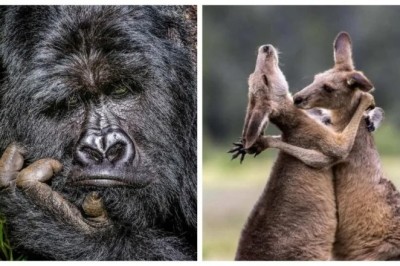Why Are Pandas Black and White?
The coloration of giant pandas, Ailuropoda melanoleuca, has puzzled scientists for a long time. They stand out in their environment, which raises questions about their ability to blend in and potentially puts them at risk due to their slow nature. How, then, did nature allow pandas to have such distinctive coloring? Californian scientists conducted a study comparing the fur color of pandas with that of other animal species to find some answers. The findings were published in the journal Science.

One aspect the scientists considered was the fact that pandas do not hibernate like other bear species. Therefore, their color is unlikely to serve as a temperature regulator. However, pandas do need to adapt to living in snowy conditions. Their black paws provide convenient camouflage against the background of stones, giving them the ability to mimic a black cloud. The team suggests that the panda's coloration evolved due to their bamboo-based diet, which prevents them from accumulating enough fat to hibernate during winter. As a result, they must remain active throughout the year, requiring the ability to hide in various habitats ranging from snowy mountains to tropical forests.
The distinctive black ears of pandas are not only cute but also serve a purpose. They help the animal appear more formidable in situations involving predators.
The dark eye patches around pandas' eyes serve as a possible "friend or foe" recognition system. Pandas have poor eyesight, which makes it challenging for them to identify friends from competitors. The distinctive markings around their eyes aid in recognizing one another.
Lead author Tim Caro describes the panda's unique coloration as an "evolutionary mystery." Due to the lack of similar mammals, solving this mystery is challenging. In order to gain insight, the scientists approached the study by analyzing each individual aspect of the panda's appearance independently.

To understand the nature of the pandas' black and white spots, researchers used the extrapolation method, extending data from studies of adaptation forms in other animals to pandas. They compared the coloration of pandas with the fur colors of 39 subspecies of bears and 195 terrestrial predatory mammals. Despite variations in temperature and vision conditions, the scientists found no correlation between color and air temperature. In situations where animals live in visually challenging environments like snow-covered mountains, they do not require black "glasses" around their eyes to reflect light.
The most significant correlation arose when comparing the colors of animals with their habitats. This supports the theory that giant pandas rely on camouflage. They inhabit high-mountain forests that border areas with both snow and vegetation. The black and white coloration of pandas serves as a compromise between these two types of environments, allowing them to effectively hide among trees and in the snow.























Comments
0 comment